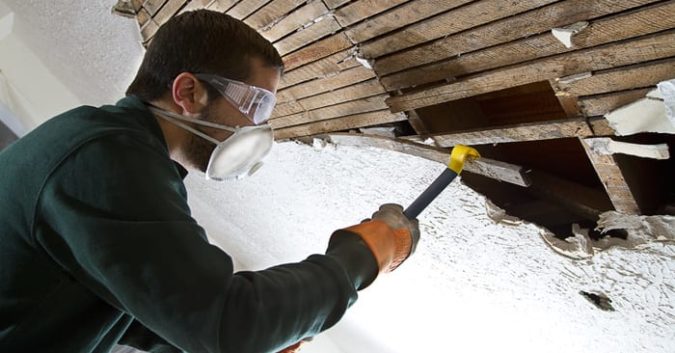For decades now, asbestos has been publicly known as a lethal carcinogen. It may be an organic mineral found naturally within the earth, but it is toxic nonetheless. Asbestos causes the deadly cancer mesothelioma, as well as lung cancer and asbestosis.
While asbestos takes 39,000 lives every year – as many as both breast cancer and traffic fatalities – it does not often make the news.
One rare and recent incident took place in New York City, when a steam pipe line exploded. The pipe casing contained asbestos, which was released into the air. While this type of problem is a rare accident, it points to a much larger issue of how asbestos has been incorporated into our infrastructure and homes through building materials.
While asbestos is no longer widely used in many building products, it is important to know that many homes could still be tainted.
Hidden Dangers
Asbestos is most likely to be in structures that were built between 1950s through the 1970s. Because asbestos can withstand heat, water and electricity, it was often used as an inexpensive construction material before it was widely known as a carcinogen.
While asbestos fibers cannot be seen by visual inspection, they can be inhaled and trapped in the lungs. These fibers irritate the lining of the lungs, which can then lead to lung cancer and mesothelioma. The problem with these diseases is that they can take 20-50 years to develop. Individuals often do not realize they have been exposed until decades after the fact.
Where to Find Asbestos in Your Home
Because asbestos is naturally resistant to fire, water, electricity, heat and cold, it was often used in pipes and different kinds of insulation. It can also be found in a wide range of other products, as listed below:
- Basement boilers
- Floor tile glue
- Vinyl floor tiles and backing
- Linoleum
- Window caulk
- Flat roofs and shingles
- Roofing felt
- Cement shingles
- Siding material
- Plaster
- Some kinds of paint
- Textured “popcorn ceilings”
- Drywall
- Attic and wall insulation that contains vermiculite
- Patching compounds used in walls and ceilings
- Hot water and steam pipes can be coated with asbestos as insulation
- Cement flat and corrugated sheet
- Millboard
While building products made in the United States do not contain asbestos, countries that do not have asbestos regulations may still manufacture building materials using asbestos.
Removal and Remedies
It’s crucial to determine whether or not a home may contain asbestos before doing any renovations. Asbestos is at its most dangerous if it is disturbed and the fibers become airborne. Asbestos dust may be created when walls are sawed or sanded, too, posing a danger to workers and residents alike.
Testing is also important if a homeowner believes a material may contain asbestos, and it has been damaged by water, or is crumbling or flaking. Home tests kits are available for asbestos, but removal or treatment must always be done by a certified professional since working with asbestos is highly dangerous and requires special training and safety precautions.
Often it is best to hire a professional industrial hygiene firm to do this testing and write a review of the property. This company will collect samples and photographs, provide a report explaining the damage and location of the asbestos and make suggestions for repairs.
This plan should be used as a guideline by an asbestos abatement contractor. Such a company needs to provide a detailed contract explaining what will be done to remove or contain the asbestos in a home so that is no longer a hazard.
A contractor can do a treatment, which means keeping the asbestos in place, but putting a seal over it so that the fibers cannot become airborne. This plan may be the best course of action for pipes and boilers to prevent insulation from decaying.
Contractors can also do removal, which is more expensive and hazardous. In these cases, the contractor must notify state and government agencies that they will be removing and disposing of asbestos in a specific location, generally a landfill that can accept asbestos.
When hiring a contractor, it is key to confirm that they are licensed by the state to do asbestos removal. The company should provide references, as well as information about completed jobs. Homeowners need to assure that workers wear protective gear, such as gloves and respirators while on the job.
After the removal is complete, the industrial hygiene firm needs to do follow-up testing to check the air for asbestos. Before the contractor takes away any safety guards, it is crucial to be certain that all asbestos has been properly removed.
The Long Battle
The United States is the only Western industrialized nation in which asbestos remains legal. As American consumers continue the fight to ban this harmful carcinogen, there is some hope on the horizon. In 2018, Canada enacted a ban on the sale, import and export of all asbestos and asbestos-containing products. This was a true milestone, as asbestos had been mined in Canada as late as 2011.
Now Canada is launching the next phase in its battle: removing asbestos from homes and public buildings. This is an important step in improving the health of a nation’s people, and one we can join as we work to remove asbestos from our homes, schools and country forever.
